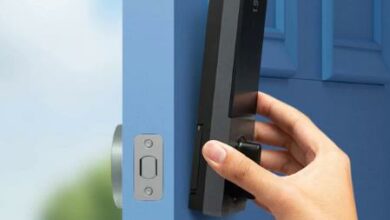Unleashing Innovation: How Digital Printers are Transforming the Automotive Industry
Digital Printers

The automotive industry has been experiencing rapid transformation over the past few decades. Design and manufacturing processes have been completely revolutionized by using digital printers to create innovative products that meet the needs of consumers.
Digital printing is one of the most exciting developments in this field, as it allows for a wide range of applications that can be used for everything from interior panels to exterior paint finishes on vehicles.
Then there’s also 3d printing that enables efficient manufacturing of automotive products. 3d manufacturing can help with prototyping, spare parts production, interior features, electronics, etc. Hence, the demand for the use of 3d printing in the automotive field is skyrocketing. According to Markets and Markets, the automotive 3d printing market is expected to reach $7.9 billion by 2027.
In this post, we’ll explore how digital printing transforms the automotive industry by providing more options for designers and manufacturers.
Evolution of Automotive Manufacturing
From the early days of handcrafted cars to today’s advanced automated production processes, automotive manufacturing has witnessed significant advancements and transformations.
- Craftsmanship and Early Mass Production (Late 19th to Early 20th Century)
- Mass Production and Standardization (1920s-1960s)
- Automation and Robotics (1970s-1990s)
- Lean Manufacturing and Just-in-Time Production (1980s-Present)
- Digitalization and Industry 4.0 (2000s-Present)
Advancements in Automotive Design
In the past, automotive designers had to rely on physical prototypes to test their designs. Now, they can do this digitally and much more quickly. This has led to increased collaboration between departments, as well as between teams in different locations.
3D printing has also enabled innovations that were not previously possible. For example, it’s now possible for designers and engineers to create complex shapes that would otherwise be difficult or expensive to make using traditional methods like injection molding or milling machining.
Applications of Digital Printers in the Automotive Industry
Digital printers can be used for various applications in the automotive industry. Listed below are a few common applications of digital printers in this sector.
Interior and Upholstery Printing
Interior and upholstery printing is an application of digital printers in the automotive industry. Digital printers are used to print upholstery and interior parts, making them ideal for the customization of vehicles.
Customized vehicles are very popular among car enthusiasts. People spend a lot of money on making their car look and feel different from those made by the manufacturers and available for anyone to purchase. The most customized cars in the US are Mazda MX-5 Miata, Wrangler, and Toyota 86, to name a few.
Digital printers spray a fine layer of ink onto a base material such as paper or plastic sheets, which then hardens into 3D objects using UV light. This technology has been around since the 1980s. Still, it has only recently become widely available due to recent advances in materials science – specifically, improved resolution at high speeds.
Exterior Finishes
Exterior finishes can be used to create unique textures and colors on a part, which can then be applied to the entire surface of the product. This process is widely used in automotive manufacturing because it allows companies to differentiate their products from competitors.
With a digital printer, automotive manufacturers, garage owners, or any car enthusiast can print different designs on a vinyl sheet, which can then be applied to the car’s exterior. This allows you to customize the exterior finishes and ensure they reflect your personality.
Advanced digital printers can replicate various surface finishes and textures, including metallic, matte, glossy, or even textured patterns like carbon fiber. Manufacturers can achieve the desired aesthetic effect by digitally printing these finishes onto car exteriors without needing expensive or labor-intensive traditional painting techniques.
With digital printers, you can change your car’s exterior as and when possible. This can help you keep up with the latest trends in the car graphics. According to SignWarehouse, the recent vinyl vehicle graphics trend includes carbon fiber vinyl accents, paint replacement, tribal graphics, etc.
Examples of exterior finishes include:
- Sandblast patterns on parts such as engine blocks, cylinder heads, and other mechanical components
- Painting cars with unique color combinations that aren’t available through mass-production methods
- Printing logos onto car bodies
Texturing and Surface Treatments
Texturing and surface treatments are an application of digital printers. Texturing is used to create a pattern or texture on a surface. Surface treatments are used to improve the durability of a surface by adding a coating, such as paint or powder coatings.
Digital printers can print textured patterns onto 3D models using UV-curable inkjet heads mounted on robotic arms that move around the printed object to apply multiple layers of UV-curable inkjet material, which hardens when exposed to ultraviolet light (UV).
Inkjet heads use tiny jets called nozzles that spray droplets of liquid at high pressure onto objects being printed for them to stick together and form solid structures with bonds strong enough for assembly into final products like car parts or consumer goods such as shoes or sports equipment.
3D Printing of Automotive Parts
3D printing of automotive parts is an application of digital printers. It can print parts for prototyping, tooling, testing, manufacturing, and repair.
The widespread adoption of 3D printing technology in this field can transform how cars are made by reducing costs and increasing efficiency while providing greater flexibility in design iteration and customization options.
Streamlining Production Processes
The digital printing process can also streamline production processes. For example, the time it takes to create a prototype is drastically reduced. Instead of building each prototype individually and testing each one manually, you can print out multiple copies in one go and try them all at once. This saves time, money, and labor costs while increasing quality control.
Digital printing is also safer than traditional manufacturing methods because fewer moving parts are involved in producing your designs. The more moving parts, the more complicated the production line. Hence, even if moving parts are involved, manufacturers try to keep them low-weight. When there are moving parts, they’re typically made out of plastic rather than metal or glass. PVC makes up around 12-17% of car plastics today.
Plus, there’s less chance of injury when handling toxic materials like those used in traditional manufacturing processes; no one wants their hands covered with lead dust.
Enhancing Sustainability and Environmental Consciousness
The automotive industry has long been one of the most environmentally conscious industries. It’s no secret that cars are expensive, but you may not realize how much money can be saved using digital printing technology. Here are just a few ways digital printing can enhance sustainability and environmental consciousness:
- Reduce waste: Before 3D printing, parts were often made in large batches with excess material left over after each batch was completed. With additive manufacturing (AM), manufacturers can print exactly what they need anytime. This reduces the amount of material used per part and eliminates waste from unused materials from previous runs. Additionally, AM leads to 69% lightweight, leading to a lower carbon footprint.
- Save money: AM allows for a reduction in tooling costs because there’s no need for expensive molds or dies when producing complex pieces like seats or dashboards.
- Improve efficiency: AM allows manufacturers to produce more parts faster than ever. This means less downtime between production runs, which translates into increased productivity.
- Improve safety: With traditional methods like injection molding or casting metal parts comes the risk of handling hot liquids or molten metal. However, these risks are eliminated when using AM because no hazardous chemicals are involved.
- Improve quality: Digital accuracy means better precision which translates into better-fitting components that function better overall while looking aesthetically pleasing.
Conclusion
The future of automotive manufacturing is bright, thanks to the advancements in 3D printing. With its ability to produce high-quality parts at low cost and speed, this innovative technology will continue transforming our world.




